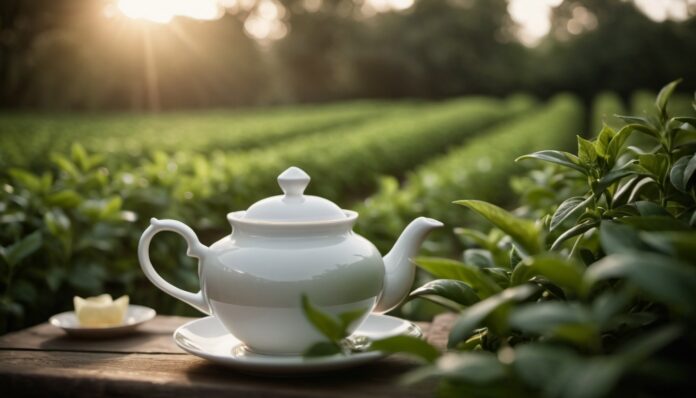Tea is one of the most popular beverages in the world, enjoyed by people from all cultures for thousands of years. Made from the leaves of the Camellia sinensis plant, tea comes in various types such as green, black, oolong, and white, each with its unique flavor and health benefits.
Whether served hot or cold, tea can be a soothing drink that helps people relax, socialize, or even focus better. Its rich history, diverse preparations, and the cultural rituals surrounding it make tea more than just a drink; it’s a global phenomenon.
The Growth and Cultivation of Tea
Tea, one of the world’s most beloved beverages, is primarily grown in regions with specific climates and altitudes conducive to its cultivation. The tea plant, Camellia sinensis, thrives in subtropical and tropical climates, often at higher elevations. Major tea-producing countries include China, India, Kenya, and Sri Lanka, each known for their unique varieties and flavors of tea.
In China, tea is grown in several provinces, including Yunnan, Zhejiang, and Fujian. China produces a wide range of teas, from green and black to oolong and pu-erh, each with distinct characteristics due to regional growing conditions and processing methods.
India, another major tea producer, is renowned for its Assam, Darjeeling, and Nilgiri teas. Assam, in northeastern India, produces robust black teas, while Darjeeling, at the foothills of the Himalayas, is famous for its delicate and aromatic teas. The Nilgiri region in southern India also produces high-quality tea with a unique flavor profile.
Kenya, one of the largest tea producers in Africa, is known for its strong and bright black teas, primarily grown in the highlands. The country’s favorable climate and rich volcanic soil contribute to the distinctive taste of Kenyan tea.
Sri Lanka, formerly known as Ceylon, produces teas that are highly regarded worldwide. The island’s tea plantations, located in regions like Nuwara Eliya, Kandy, and Uva, produce teas with a wide range of flavors and aromas, influenced by the diverse climates and altitudes.
Tea is also grown in other countries, including Japan, known for its green teas like matcha and sencha, and Taiwan, famous for its high-quality oolong teas. Each region’s unique climate, soil, and processing techniques contribute to the rich diversity of flavors found in teas around the world.
Interesting Facts About Tea
- Tea was discovered in China around 2737 BCE by Emperor Shen Nong when tea leaves accidentally fell into his boiling water.
- Tea is made from the leaves of the Camellia sinensis plant.
- There are six main types of tea: green, black, white, oolong, yellow, and pu-erh.
- Green tea is known for its high antioxidant content and potential health benefits.
- Black tea is fully oxidized, giving it a stronger flavor and higher caffeine content.
- Oolong tea is partially oxidized, sitting between green and black tea in flavor and caffeine levels.
- White tea is made from young tea leaves and buds, and is the least processed of all teas.
- Yellow tea is rare and made through a unique process that gives it a slightly yellow color.
- Pu-erh tea is fermented, which gives it a rich, earthy flavor.
- The British tradition of afternoon tea began in the early 19th century by Anna, the Duchess of Bedford.
- Tea bags were invented in the early 1900s by Thomas Sullivan, a New York tea merchant.
- Iced tea was popularized in the United States during the 1904 World’s Fair in St. Louis.
- Chai tea, a spiced milk tea, is a popular beverage in India.
- Matcha, a powdered green tea, is an integral part of Japanese tea ceremonies.
- The Boston Tea Party in 1773 was a protest against British taxes on tea and played a key role in the American Revolution.
- Tea is the second most consumed beverage in the world, after water.
- The largest tea producers in the world are China, India, Kenya, and Sri Lanka.
- The health benefits of tea include improved heart health, reduced cancer risk, and better brain function.
- Herbal teas, such as chamomile and peppermint, are not made from the Camellia sinensis plant and are technically tisanes.
- Theanine, an amino acid found in tea, can promote relaxation and improve focus.
- Tea ceremonies in China and Japan are traditional practices with deep cultural significance.
- The most expensive tea in the world is Da Hong Pao, a rare oolong tea from China.
- Tea can be brewed using loose leaves or tea bags, with loose leaves often considered to provide a better flavor.
- Tea sommeliers, similar to wine sommeliers, are trained to appreciate and recommend different types of tea.
- Kombucha is a fermented tea that has gained popularity for its probiotic benefits.
- Some teas, like Earl Grey, are flavored with additional ingredients such as bergamot oil.
- The caffeine content in tea is generally lower than that in coffee, making it a popular alternative.
- Tea bricks, compressed blocks of tea leaves, were used as a form of currency in ancient China.
- Tea can be infused with fruits, flowers, and spices to create a wide variety of flavors.
- Many cultures have unique tea traditions, such as the Moroccan mint tea or the British afternoon tea, reflecting the global importance of this beverage.
